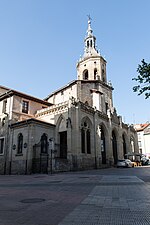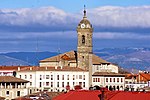Lantern Museum
2000 establishments in the Basque Country (autonomous community)Museums established in 2000Museums in Vitoria-GasteizReligious museums in Spain

The Lantern Museum (Basque: Farolen museoa, Spanish: Museo de los Faroles) is located in Vitoria-Gasteiz, Álava, Basque Country, Spain. It houses the lanterns used in the Rosary of the Lanterns procession, celebrated every 4th of August during the Virgen Blanca Festivities.
Excerpt from the Wikipedia article Lantern Museum (License: CC BY-SA 3.0, Authors, Images).Lantern Museum
Zapatari kalea/Calle Zapatería, Vitoria-Gasteiz Alde Zaharra/Casco Viejo
Geographical coordinates (GPS) Address Nearby Places Show on map
Geographical coordinates (GPS)
| Latitude | Longitude |
|---|---|
| N 42.847950611111 ° | E -2.6740886111111 ° |
Address
Zapatari kalea/Calle Zapatería 33
01001 Vitoria-Gasteiz, Alde Zaharra/Casco Viejo
Autonomous Community of the Basque Country, Spain
Open on Google Maps











